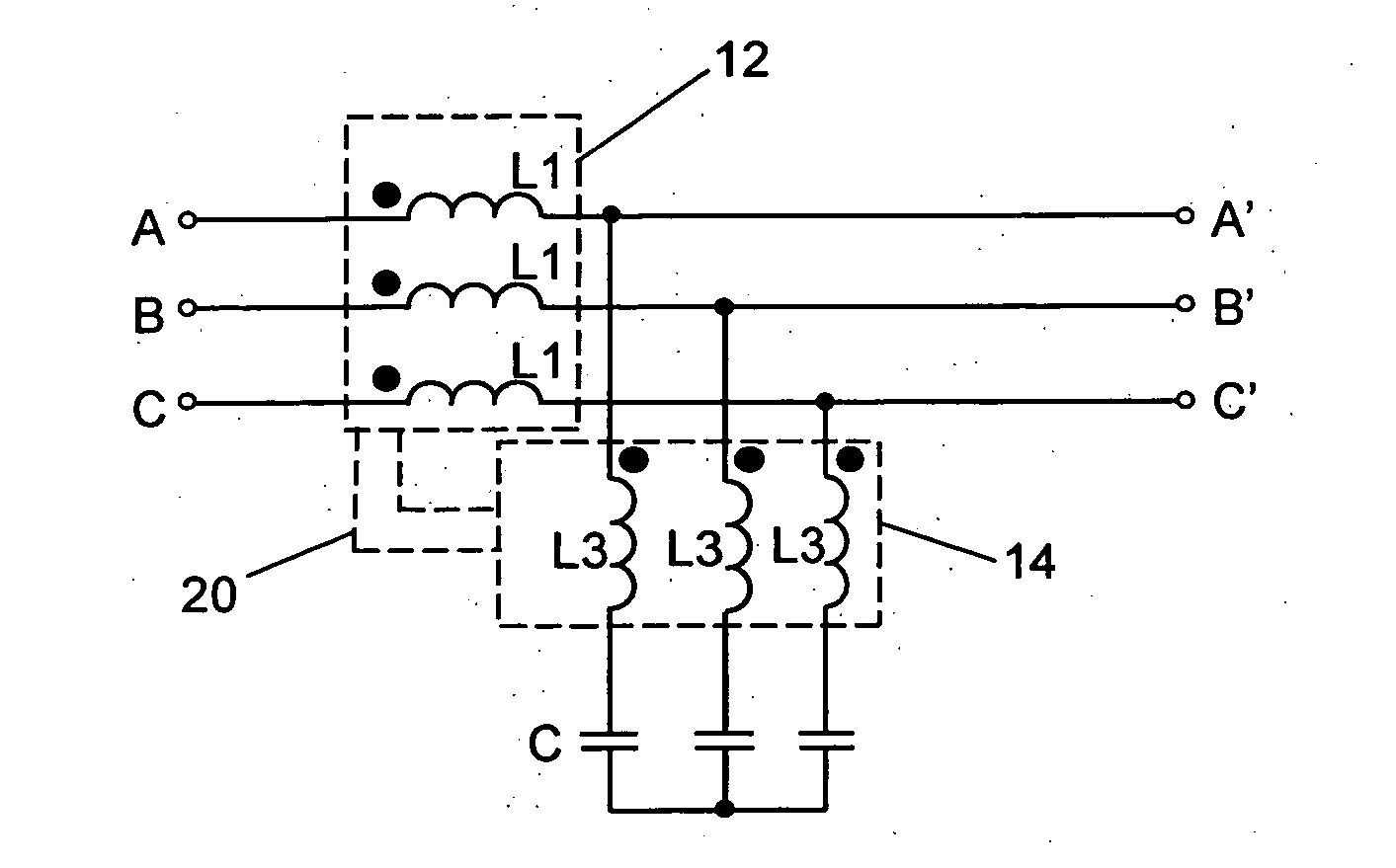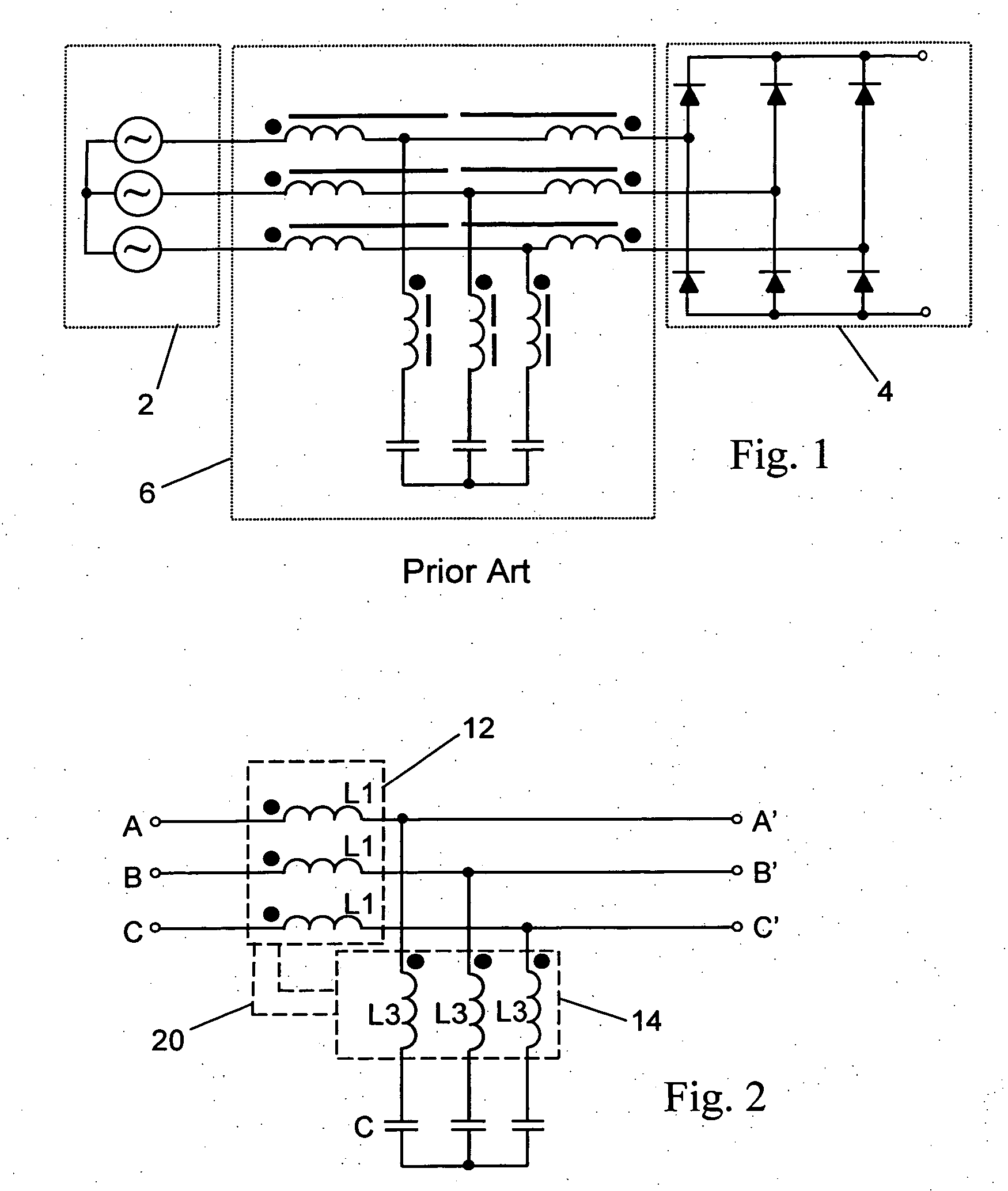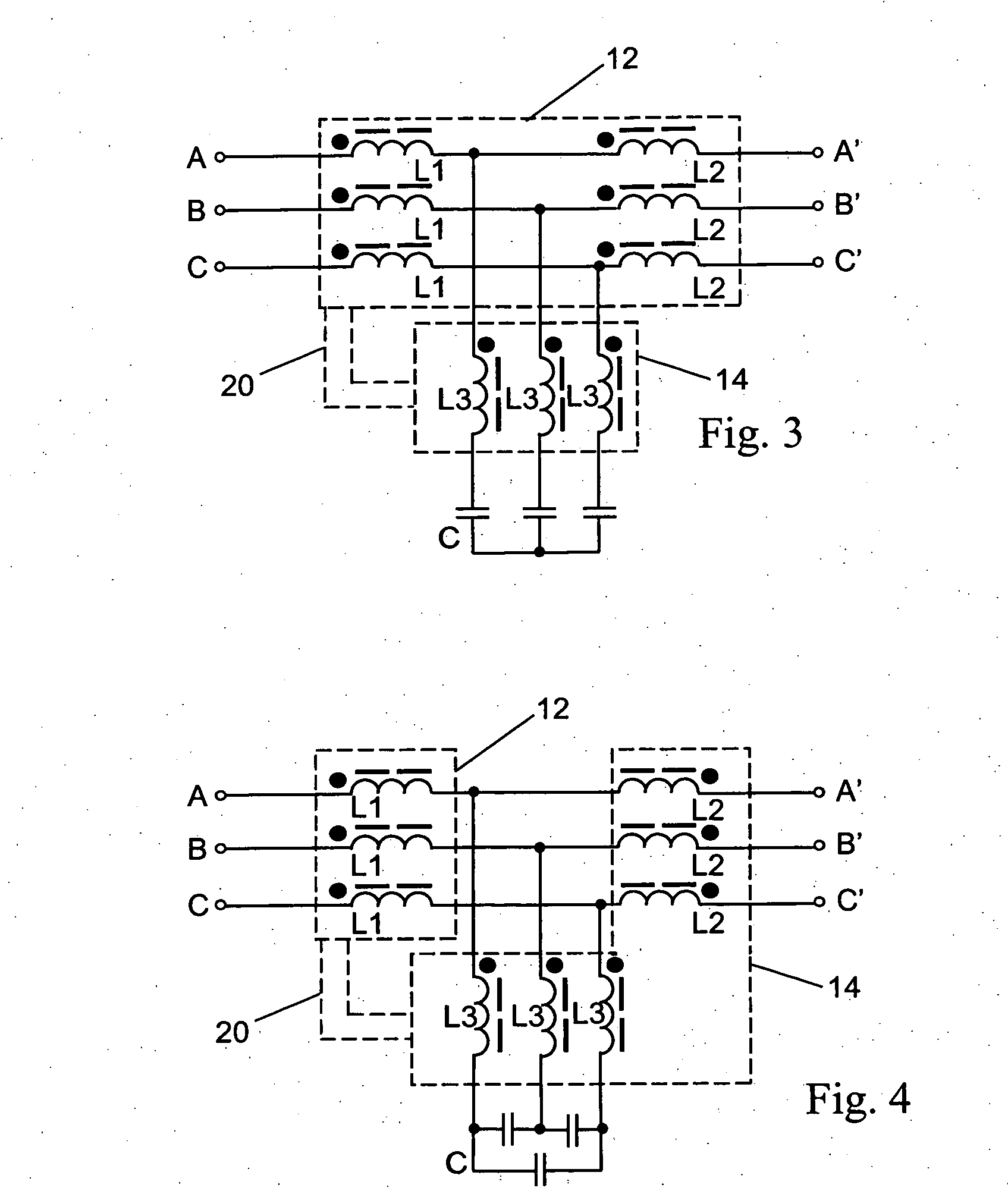Harmonic mitigating device with magnetic shunt
a technology of mitigating device and magnetic shunt, which is applied in the direction of dc circuit to reduce harmonic/ripple, power conversion system, dc network circuit arrangement, etc., can solve the problems of increasing the voltage total harmonic distortion level, reducing the reliability of power distribution equipment, and reducing the electromagnetic compatibility of loads, so as to reduce the harmonic current flowing, and control the level of magnetic coupling.
- Summary
- Abstract
- Description
- Claims
- Application Information
AI Technical Summary
Benefits of technology
Problems solved by technology
Method used
Image
Examples
Embodiment Construction
[0034] The harmonic mitigating system of the invention may utilized in a multi-winding reactor having a capacitor bank, similar to that described and illustrated in U.S. Pat. No. 6,127,743 issued Oct. 3, 2000 to Levin et al., which is incorporated herein by reference and illustrated in FIG. 1. In the embodiments of the invention illustrated and described hereafter, the power distribution system 2 may be any AC electrical power source, typically a mains power supply powered by an electrical utility or a local generator. The load 4 typically includes one or more harmonic generating (non-linear) loads, the most common being non-linear loads such as adjustable speed drives, rectifiers etc. The harmonic spectrum of different types non-linear loads may vary, however the device of the invention is suitable for mitigating harmonic currents generated by many different kinds of harmonic generating loads.
[0035] In the prior art harmonic mitigating system 6 illustrated in FIG. 1, described in ...
PUM
 Login to View More
Login to View More Abstract
Description
Claims
Application Information
 Login to View More
Login to View More - R&D
- Intellectual Property
- Life Sciences
- Materials
- Tech Scout
- Unparalleled Data Quality
- Higher Quality Content
- 60% Fewer Hallucinations
Browse by: Latest US Patents, China's latest patents, Technical Efficacy Thesaurus, Application Domain, Technology Topic, Popular Technical Reports.
© 2025 PatSnap. All rights reserved.Legal|Privacy policy|Modern Slavery Act Transparency Statement|Sitemap|About US| Contact US: help@patsnap.com



